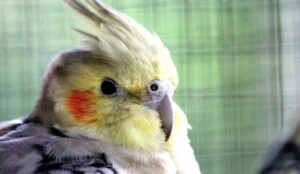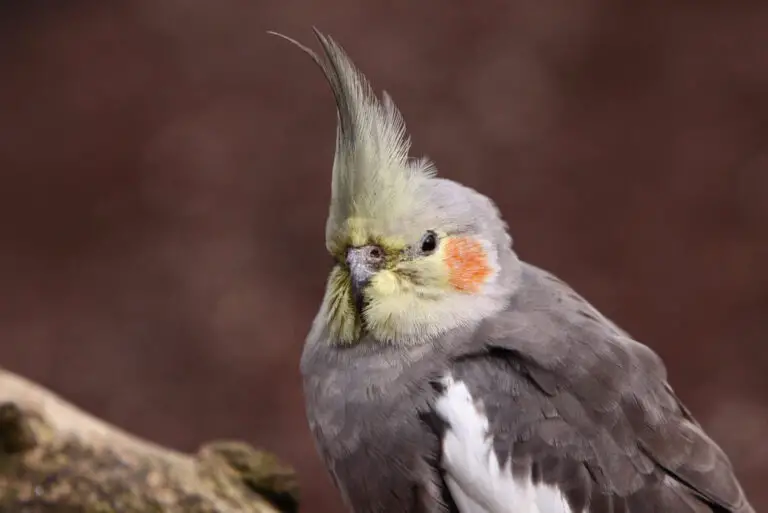To determine the age of a cockatiel, inspect the bird’s eyes, feathers, and behavior for indications of youth or maturity. Proper examination of eye color, feather patterns, and behavior can help you ascertain your cockatiel’s approximate age.
Cockatiels are mesmerizing creatures that capture the hearts of bird enthusiasts with their vibrant personalities and beautiful appearances. However, when it comes to understanding their age, this can be quite challenging. Unlike mammals, birds don’t have obvious signs like wrinkles or graying hair to indicate their age.
Nevertheless, by carefully observing several key factors, including eye color, feather patterns, and behavior, you can estimate your cockatiel’s age. We will explore these factors in detail to help you determine how old your feathery companion might be. So, if you’re curious about your cockatiel’s age, keep reading.
Uncovering The Age Of Your Feathered Friend: An Essential Guide

Uncovering the Age of Your Feathered Friend: An Essential Guide
With their vibrant feather colors and distinct patterns, Cockatiels provide valuable clues to estimate their age. Feather appearance is a significant factor that can help determine the approximate age of a cockatiel. Younger birds often have lighter and brighter feathers, while older ones display more muted colors and patterns. However, it’s worth noting that genetics can also play a role in feather color and pattern variations.
Another indicator of a cockatiel’s age is its behavior. Younger birds are more energetic and playful, exhibiting a higher activity level. As they age, their behavior gradually becomes more settled, and they may become less active.
While these factors can provide valuable insights into a cockatiel’s age, it’s important to remember that they are just guidelines and not definitive evidence. Factors such as diet, health, and environment can also influence a cockatiel’s appearance and behavior. Consulting with an avian veterinarian or an experienced cockatiel breeder is advisable for a more accurate age assessment.
Method 1: Analysis Of Physical Features
When determining the age of a Cockatiel, examining their eyes and pupils can provide valuable insights. Younger cockatiels tend to have eyes that appear brighter and more vibrant. As they age, their eyes may lose some luster and appear duller.
Another indicator of a Cockatiel’s age is the growth of their beak and nails. Younger birds often have shorter beaks and sharper nails. Over time, as they mature, the beak and nails will grow longer and may become more blunt.
The quality and brightness of a Cockatiel’s feathers can also provide clues about their age. Younger birds tend to have softer and smoother feathers with more vibrant colors. Their feathers may become duller as they age and lose some of their softness and vibrancy.
Method 2: Historical Documentation And Records
|
One way to determine the age of a cockatiel is by reviewing pedigree and hatch certificates. Breeders and pet stores often provide documentation that includes the date of birth or hatch. You can check these records to understand the bird’s age. Additionally, you may find information about the bird’s parents, which can also indicate its age. |
|
Another option is to contact previous owners and inquire about the bird’s age. If the cockatiel has had multiple owners, each one might have some documentation or knowledge about its birthdate or approximate age. Furthermore, you can try to obtain veterinary records from previous owners. These records usually contain important health-related information, including the bird’s age during treatment or examination. |
Method 3: Genetic Testing And DNA Profiling
Avian DNA testing and profiling is a reliable method to determine the age of a cockatiel. DNA-sexing and genetic age estimation are the two primary aspects of this process. DNA sexing identifies the bird’s gender, while genetic age estimation can provide an accurate age range.
DNA samples can be collected by plucking a few feathers from the bird’s chest or utilizing a pre-fitted plucking device. It is important to ensure the bird’s safety and comfort during the collection process. Once the samples are collected, they can be sent to a specialized laboratory for testing.
Accessing laboratory services is essential for avian DNA testing. Several laboratories offer these services, and choosing one that specializes in avian DNA testing is recommended. The laboratory will analyze the DNA samples and provide a detailed report with the bird’s gender and age range.
Frequently Asked Questions For How To Tell Cockatiel Age
How Can You Tell The Age Of Your Cockatiel?
You can determine the age of your cockatiel by looking at its physical characteristics. Younger birds have smooth feathers and bright eyes, while older ones may have faded and cloudy feathers. Also, the color of their cheeks changes as they mature.
How Can You Tell How Old A Bird Is?
To determine a bird’s age, examine its plumage for signs of immaturity, such as dull colors, patchy feathers, or downy fluff. Count the number of molts or feather replacements, which increase with age. Observe physical characteristics, like beak or eye color, which change as birds mature.
How Old Do Cocktail Birds Get?
Cocktail birds typically live for 15 to 20 years. They have a lifespan of around 15-20 years.
How Old Is My Cockatiel In Human Years?
Your cockatiel’s age in human years can vary, but generally, they have a lifespan of 15 to 20 years, equivalent to the teenage years and onward for humans.
Conclusion
Determining the age of your cockatiel is an essential skill for any bird owner. You can make an educated guess by observing physical characteristics, behavior, and weather conditions. Remember to consider your cockatiel’s history, which can provide important clues.
A detailed record of your bird’s growth and milestones will also help you accurately determine its age. You can become a pro at telling a cockatiel’s age with patience and careful observation. Happy bird-watching!

Hi, I’m Regina Rios. Just another bird lover who loves to share knowledge from personal experience. I’ve grown up with pet birds since childhood as my mommy also loves birds. As I can’t pet many birds in open air in my house as my mom does; I created my first bird cage on my rooftop using wood, copper wire, and a metal shed in 2018 and start collecting pet birds. Now, I have so many pet birds such as Macaws, Parrot, Cockatiel, Parakeet, and others. Not only that, if I see natural birds are injured I keep them in my house until they get well. Now, my hobby becomes my income source as my home birds have babies and I sell them to birds lover like mine. I’ve created this blog to inspire others bird owners by sharing my personal knowledge. Good Luck!

